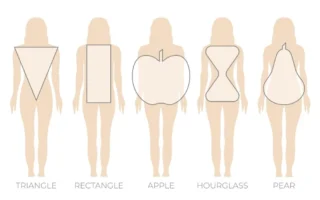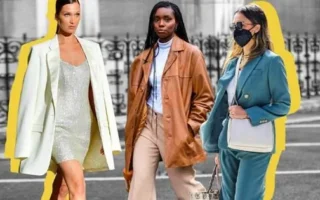Color plays a pivotal role in fashion, influencing our mood, style, and the overall impact of an outfit. Mastering color combinations can elevate your wardrobe, making your outfits more cohesive and visually appealing. Here’s a detailed guide on how to effectively combine colors in your clothing and accessories.
Understanding Color Theory
To start, it’s helpful to familiarize yourself with some basic principles of color theory:
- Primary Colors: Red, blue, and yellow are the building blocks of all other colors.
- Secondary Colors: Created by mixing primary colors—green (blue + yellow), orange (red + yellow), and purple (red + blue).
- Tertiary Colors: Formed by mixing primary and secondary colors, such as red-orange or blue-green.
- Color Wheel: A visual representation of colors, showing how they relate to one another. Understanding the color wheel can help you create harmonious combinations.
Color Combinations

- Complementary Colors
- Definition: Colors that are opposite each other on the color wheel.
- Examples: Blue and orange, red and green, yellow and purple.
- Styling Tip: Use complementary colors to create striking contrasts. For instance, pair a deep blue dress with bright orange accessories. This combination is bold and eye-catching.
- Analogous Colors
- Definition: Colors that are next to each other on the color wheel.
- Examples: Blue, blue-green, and green; red, red-orange, and orange.
- Styling Tip: Analogous color combinations create a harmonious and cohesive look. A soft blue blouse paired with a green skirt and teal accessories can provide a calming effect.
- Triadic Colors
- Definition: Three colors that are evenly spaced around the color wheel.
- Examples: Red, yellow, and blue; purple, green, and orange.
- Styling Tip: Use triadic combinations for a vibrant and dynamic look. For example, a yellow top with purple pants and red accessories creates a fun and energetic outfit.
- Monochromatic Colors
- Definition: Different shades, tints, and tones of the same color.
- Examples: Light blue, medium blue, and navy blue.
- Styling Tip: Monochromatic outfits can appear sophisticated and polished. Try wearing varying shades of gray with silver accessories for a sleek look.
- Neutral Colors
- Definition: Colors that are not on the color wheel, such as black, white, gray, beige, and brown.
- Styling Tip: Neutrals can serve as a base for brighter colors. For instance, pair a white shirt with a bold red skirt and nude heels. Neutrals are versatile and can be mixed with any color.
Tips for Combining Colors in Outfits

- Balance Bold and Subtle: If you’re wearing bold colors, balance them with neutral shades to avoid overwhelming the look. For example, a bright yellow top can be paired with dark denim and neutral accessories.
- Consider Skin Tone: Choose colors that complement your skin tone. Warm tones (like red and orange) suit warm skin tones, while cool tones (like blue and purple) flatter cooler skin tones.
- Use the 60-30-10 Rule: This classic rule suggests using 60% of a dominant color, 30% of a secondary color, and 10% for an accent color. For example, a navy dress (60%), with a light blue cardigan (30%), and red shoes (10%) creates a balanced look.
- Textures Matter: Different fabrics can change how colors are perceived. For instance, a shiny fabric may enhance the vibrancy of a color, while a matte finish may soften it. Mixing textures can also add depth to your outfit.
- Prints and Patterns: If incorporating prints, choose one color from the print to use as a base for the rest of your outfit. For example, if a floral dress has hints of pink and green, pair it with solid green accessories.
- Seasonal Considerations: Some colors resonate more with certain seasons. Lighter colors and pastels are often associated with spring and summer, while richer, darker hues are popular in fall and winter.
Accessories and Color Combinations
- Jewelry: Use metallics (gold, silver, bronze) to complement or contrast your outfit. For instance, gold works well with warm tones, while silver pairs nicely with cool tones.
- Bags and Shoes: Accessories can be a great way to incorporate color without overwhelming your look. A brightly colored handbag can serve as a statement piece against a neutral outfit.
- Scarves and Hats: These can introduce new colors and patterns into your ensemble. A vibrant scarf can elevate a basic outfit instantly.





Wow
[…] Truth: Accessories are a great way to express individuality. Statement pieces can elevate even the simplest outfits. Don’t shy away from bold accessories; they can be a conversation starter! […]